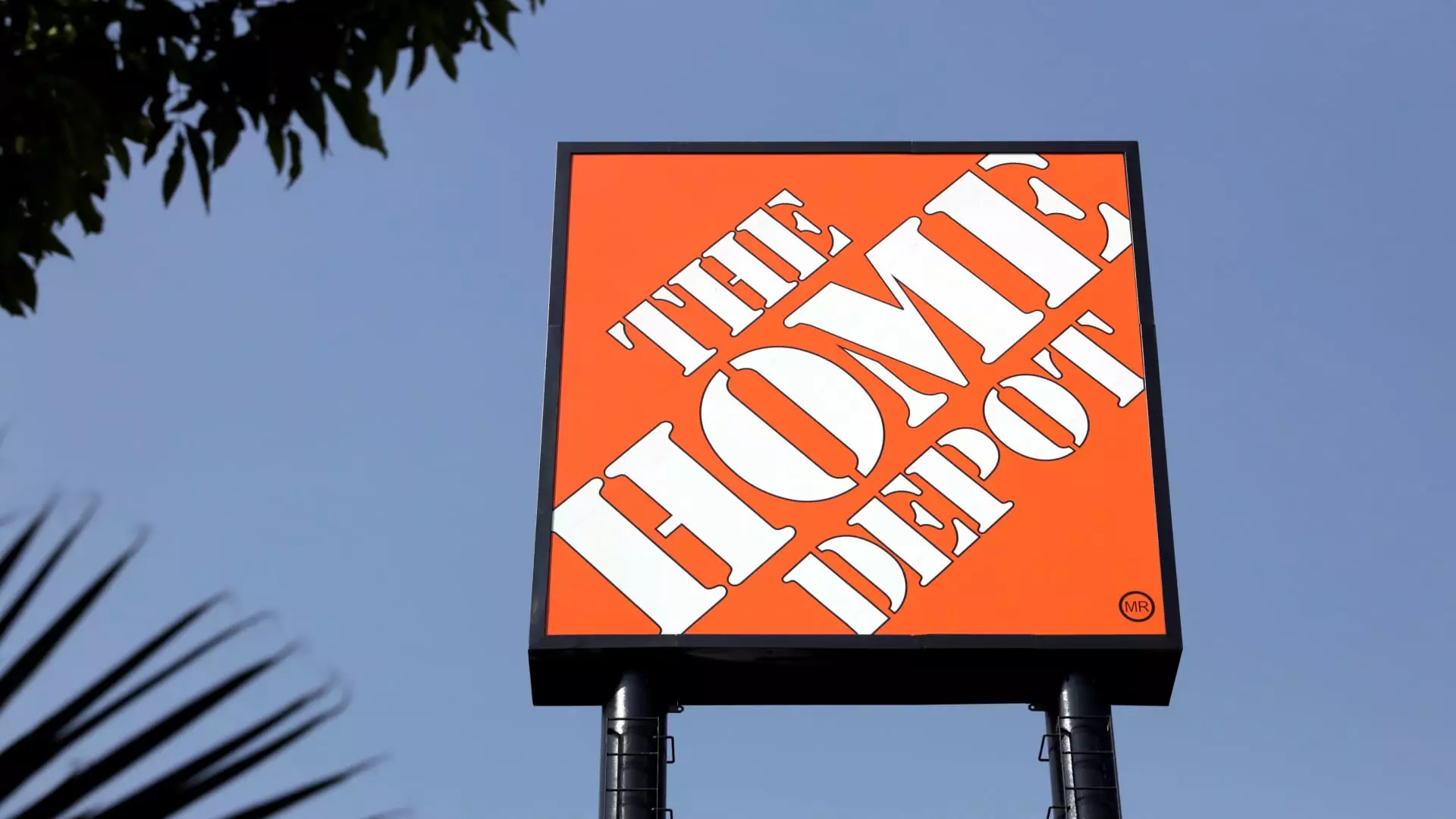Home Depot recently announced a notable increase in its quarterly sales, reporting over a 6% year-over-year growth. This surge can be attributed to several factors, including the integration of its newly acquired business, SRS Distribution, increased demand for home improvement supplies, and the impact of favorable weather conditions. Despite impressive numbers, the company is navigating a complex economic landscape that continues to influence consumer behavior.
Sales Growth Fueled by Acquisitions and Repairs
The substantial growth in sales reflects a strategic decision by Home Depot to acquire SRS Distribution, a business that caters to professionals in sectors like roofing and landscaping. This $18.25 billion acquisition significantly bolstered Home Depot’s revenue, contributing approximately $6.4 billion to their total sales. Furthermore, the favorable weather patterns across various regions enhanced outdoor project sales, leading to increased purchases of items like grills and building materials as consumers engaged in repairs following hurricanes Helene and Milton.
Interestingly, Home Depot’s total sales projection for the year has been adjusted upward to around 4%, a revision from the earlier estimate of 2.5% to 3.5%. This optimistic outlook reflects the company’s ability to leverage its acquisition effectively while capitalizing on seasonal demand spikes due to weather.
Consumer Behavior and Spending Patterns
Home Depot has noted a significant shift in consumer behavior, as many customers are currently deferring home improvement projects due to economic uncertainties. Richard McPhail, the Chief Financial Officer, emphasized that while customers are financially stable, there’s a hesitance to invest in remodeling projects until the interest rates become more favorable. Homeowners have expressed feelings of pent-up demand, indicating a desire to undertake various projects, but the present environment inhibits immediate action.
Despite the industry pressures, Home Depot maintains a strong customer base, with approximately 90% of do-it-yourself shoppers owning their homes. However, the challenge remains in converting this intent into actual sales, especially as they contend with negative comparable sales—a trend that has persisted for eight consecutive quarters.
Home Depot’s net income for the fiscal third quarter saw a slight decline to $3.65 billion compared to the previous year’s $3.81 billion. Nevertheless, revenue climbed by 6.6%, reaching $40.22 billion during the quarter. Analysts had predicted a decrease in comparable sales, but the drop of only 1.3% was somewhat of a positive surprise, overshadowing expectations. Despite this, the persistent challenges related to high-interest rates and inflation continue to affect consumer spending, leading the company to adjust its forecast downwards earlier in the year.
The broader economic environment, including a potential interest rate cut by the Federal Reserve, has led investors to speculate about an eventual rebound in housing turnover. McPhail noted that while conditions have improved, the timeline for a significant change remains uncertain.
Home Depot’s Strategic Adaptations
To increase resilience against these economic pressures, Home Depot has focused on enhancing sourcing strategies and broadening its portfolio. Most of its supply chain operates out of North America, primarily leveraging suppliers from Mexico. McPhail highlighted their ongoing efforts to diversify sourcing to mitigate potential price pressures arising from tariffs, particularly those that may be implemented by the incoming administration.
Among the other strategic initiatives undertaken by Home Depot are efforts to engage more deeply with professional contractors, traditionally a market segment that offers substantial growth potential. This diversification mirrors shifting consumer preferences and is indicative of Home Depot’s proactive approach in addressing market dynamics.
As the holiday season approaches, Home Depot anticipates a boost in sales fueled not only by typical holiday purchases but also by attention-grabbing seasonal decor. The introduction of viral products, such as oversized outdoor decorations, creates an avenue for increased customer engagement and shopping traffic as families prepare their homes for celebratory festivities.
Overall, while Home Depot has reported growth amid challenging conditions, the company’s outlook remains cautious as it navigates shifts in consumer sentiment and broader economic factors. The potential for unlocking existing demand is contingent upon improving conditions in the housing market and stabilization in interest rates, which are closely monitored by both consumers and retailers alike.
Home Depot’s current performance showcases the interplay between strategic acquisitions, market adjustments, and consumer behavior. As the company positions itself to ride the waves of economic change, the focus remains not just on immediate sales but on nurturing a sustainable growth trajectory in an unpredictable market landscape. Whether this will translate into a robust recovery remains to be seen, but Home Depot’s willingness to adapt could serve as an essential component of its continued success.

